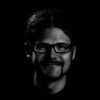Myth Makers—Spectrosynthesis III is called "the first major survey exhibition on LGBTQ+ perspectives in Hong Kong." It tests the waters for free speech in a city that is changing quickly. It is the third show in the Sunpride Foundation's Spectrosynthesis series of LGBTQ+ Asian art shows. It is being held at Tai Kwun Contemporary until April 10. Even though censorship in Hong Kong has been getting worse, only one work has been taken off the show. In the exhibition, a rejection letter is put in place of a video from Shu Lea Cheang's series 3x3x6, which shows ten stories of jailed sexual non-conformists. This is because the video is said to have explicit sexual content. Cheang's piece was originally made for the 2019 Venice Biennale and shown in the Palazzo delle Prigioni, which, like Tai Kwun, used to be a prison. An Indian artist who took part in the show agreed to have a work changed. The art world in Hong Kong is right to be worried about "mainlandization." China's art community has a large and mostly accepted LGBTQ+ population, but many artists don't talk about it in public, and international LGBTQ+ artists who show in China get "straightwashed." Hong Kong, on the other hand, is still pretty free. Since the show opened in late December, Hong Kong businessman Patrick Sun, who started Sunpride in 2014 to collect and promote LGBTQ+ Asian art, says there has been "tremendous community support" and interest from the public.
The show starts and ends with video works by Ellen Pau, who has been making art in Hong Kong since the 1980s, when the art scene there was still young. The first piece in the show, Song of the Goddess (1992), shows "the close relationship between the opera actresses Yam Kim-fai and Pak Suet-sin on and off screen in the 1960s," say Chantal Wong and Inti Guerrero, who are in charge of putting together the show. It is "one of Hong Kong's earlier examples of viewers collectively identifying with a same-sex love story," they say, adding that broadcast Cantonese opera with cross-dressing female actors was "the main field in which queerness was manifested culturally and publicly, though sometimes unacknowledged." The show ends with Pau's ethereal new video 52Hz (2022), which is an indirect tribute to two Hong Kong schoolgirls who killed themselves after their relationship was found out. The bookend videos by Pau show that the exhibition includes works from many different time periods. They also show that LGBTQ+ Asian art is not a new thing.
In the first section, "Queer Mythologies: On and Off the Stage," there are historical standouts like the late Filipino-American artist Alfonso Ossorio and the Indian artist Bhupen Khakhar. In the second section, "Body Politics: Criminalization, Control, and Counter Narratives," there is Josef Ng's seminal 1994 performance Brother Cane, which caused Singapore to ban performance art for a decade because the artist scattered pubic hair trimming When Spectrosynthesis opened at the Museum of Contemporary Art Taipei in 2017, it was the first major survey of LGBTQ+ artists in a mainstream institution in Asia. Importantly, gay artists in most of Asia still have to be careful. For example, Shanghai's long-running Pride festival was shut down because of official harassment, and Singapore recently decriminalized gay sex but still forbids gay marriage. Against this chaos, the Spectrosynthesis series has made queerness a more common topic in the regional art scene and brought more attention to artists who aren't as well known.
Two years before the island made same-sex marriage legal, more than 50 works by 22 ethnic Chinese artists were shown in Taipei in 2017. In 2019 and 2020, Spectrosynthesis II was held at the Bangkok Art and Culture Center. More than 50 artists showed their work there. It has grown to include 130 works by about 60 artists in Hong Kong. Trevor Yeung and Beatrix Pang are two of the artists from Hong Kong who are taking part. A nonprofit called Queer Reads Library, which was started in 2018, worked together on an archival section. Photos by Jiaming Liao of the cruising spot in Kowloon Park and a sound installation by Samson Young that recreates the pulsing sounds of club Propaganda connect the exhibition to the gay community's memory. The show also goes back to the 1940s with works like Patrick Ng Kah Onn's self-portraits from the 1950s, which the curators say show "early manifestations of 'queer before gay,' before these identities took shape, decades before the term LGBTQ+ was coined." A collection of letters and pictures from Kary Kwok and Hiram To, two well-known fashion photographers and artists from Hong Kong, that spans decades, gives the show a personal feel.
Patrick Sun thinks that there will be more international visitors this month because Art Basel is coming to Hong Kong for the first time since the borders were opened. A fourth show will take place in an Asian city that hasn't been chosen yet. He says that the British colonial code 377, which made homosexual acts illegal, was taken away in 2018 in India and in August of last year in Singapore. "It may seem impossible for some countries to host an exhibition like Myth Makers right now, but the world is changing, and I have good reasons to be optimistic," he says.


 Jean Dubreil
Jean Dubreil